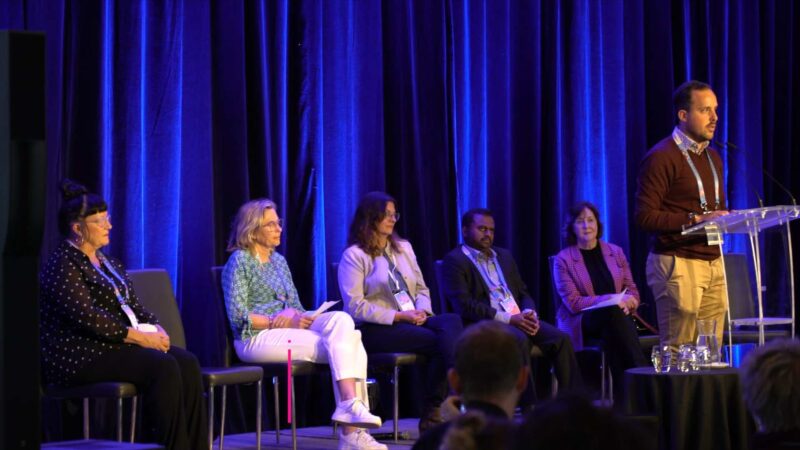MISSION TO RAISE AWARENESS OF SARCOMA AND CLINICAL TRIAL FUNDING Research lagging for sarcoma, despite accounting for one third of adolescent cancer deaths
With
Associate Professor Jeremy Lewin, Medical Oncologist,
Peter MacCallum Cancer Centre & Medical Director,
Victorian Adolescent and Young Adult Cancer Service &
Research & Education Lead – Sarcoma, VCCC Alliance
Dr Vivek Bhadri,
Paediatric and Adolescent Medical Oncologist
Chris O’Brien Lifehouse & Westmead Public Hospital &
Board Director
Australia and New Zealand Sarcoma Association (ANZSA)
AUSTRALIAN HEALTH JOURNAL SEGMENT
Filmed in Sydney & Melbourne | September 2025
Sarcoma, a rare and aggressive cancer, remains the deadliest cancer for children and young adults, accounting for nearly one third (30%) of cancer-related deaths among those aged 15–24 and one tenth (10%) of those aged 0–14. Further, still severely under-diagnosed, sarcoma only accounts for one sixth (15%) of all cancer diagnoses in the 15 – 24 age group, and less than a tenth (8%) among children under 10.
Despite this, public awareness and research funding for sarcoma funding remain critically low, with sarcoma receiving just $4.6m in funding for research in 2018-2020 – compared to the tens of millions other cancers receive. Sarcoma gets only a tiny fraction of funding for research that more common cancers receive, despite having the same costs to conduct studies.
The lack of funding reflects long-term survival rates for sarcoma which remain concerningly low, at just a 50% 10-year survival rate, while five-year survival rates for common cancers such as prostate and breast cancer have increased to over 90% in the past four decades (96% and 92% respectively).
Accounting for just 1% of all adult cancer diagnoses, sarcomas are rare and complex cancers that form in bone, cartilage or soft tissue8. There are over 100 different subtypes of sarcoma, which each require their own diagnostic and treatment pathways, which is why continued research is essential to improving patient outcomes.
Research indicates sarcomas are misdiagnosed in nearly one third (30%) of cases, emphasising the importance of ongoing research to support diagnostic developments, alongside improvements in patient treatment and management pathways.
Source: Australian and New Zealand Sarcoma Association (ANZSA) media release 1 July 2025
You Might also like
-
Global collaboration in pulmonary fibrosis research
Pulmonary fibrosis is a lung disease that occurs when lung tissue becomes damaged and scarred. The debilitating and fatal disease ended the life of an Australian man 8 years ago.
His son led philanthropic efforts to establish the connection between 2 Australian organisations; Lung Foundation Australia and Centre for Research Excellence in Pulmonary Fibrosis and the US based, Three Lakes Foundation. The three organisations recently announced a collaboration to create a global network for PF research.
-
Study on digital tool for pharmacists in aged care
In March 2022, the Australia government announced $350 million of funding over 4 years to employ on-site pharmacists in residential aged care, starting July 2023. In April 2023, the government made changes to the proposed on-site pharmacists, where the new program will now be delivered by and through community pharmacies. Regardless of how the model will be implemented, the goal remains the same – to improve quality use of medicines and medicines safety for aged care residents.
-
Jamie Stanistreet talks Medical Technology
Jamie Stanistreet
Retired Managing Director Medtronic Australia and New Zealand
talks Medical Technology in Australia and the Asia-Pacific



